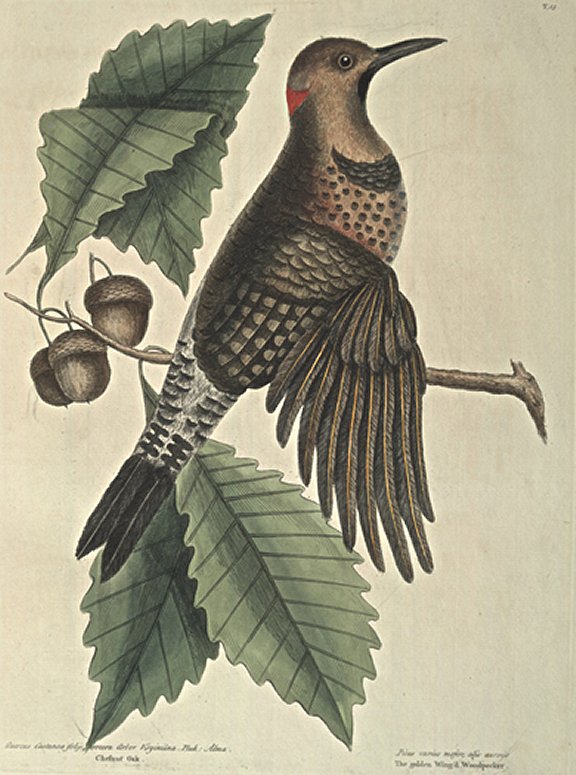Plate Number: I 18PICUS major alis aureis: The Gold-winged Wood-pecker This Bird weighs five ounces: the Bill black, an inch and half long, and a little bending: from the angles of the Mouth on each side runs down a broad black lift, about an inch long: the upper part of the Head and Neck of a lead-colour. On the hind part of the Head is a large scarlet spot. On the hind part of the Neck, Throat, and about the Eyes, of a bay colour; the Back, and part of the Wing next to it, is intermix'd with black spots, in form of half moons. The larger Wing-Feathers brown. What adds to the elegancy of this bird, and what alone is sufficient to distinguish it by, is, that the beams of all the Wing-Feathers are of a bright gold-colour. The Breast has in the middle of it a large black spot, in form of a crescent, from which to it's vent it is dusky white, and spotted with round and some heart-shaped black spots. The Rump white, the Tail black, which, with the Feet, are formed as others of this kind. It differs from other Wood-peckers in the hookedness of it's Bill, and manner of feeding, which is usually on the ground, out of which it draws worms and other insects; neither do they alight on the bodies of trees in an erect posture as Wood-peckers usually do, but like other Birds. The Hen wants the black lift, which is at the Throat of the Cock, except which, she differs from him not in colour. Quercus castaneae foliis, procera arbor virginiana: The Chestnut OakThis Oak grows only in low and very good land, and is the tallest and largest of the Oaks in these parts of the World: the Bark white and scaly; the Grain of the Wood not fine, though the Timber is of great use: the Leaves are large, indented round the edges, like those of the Chesnut. None of the other Oaks produce so large Acorns. |